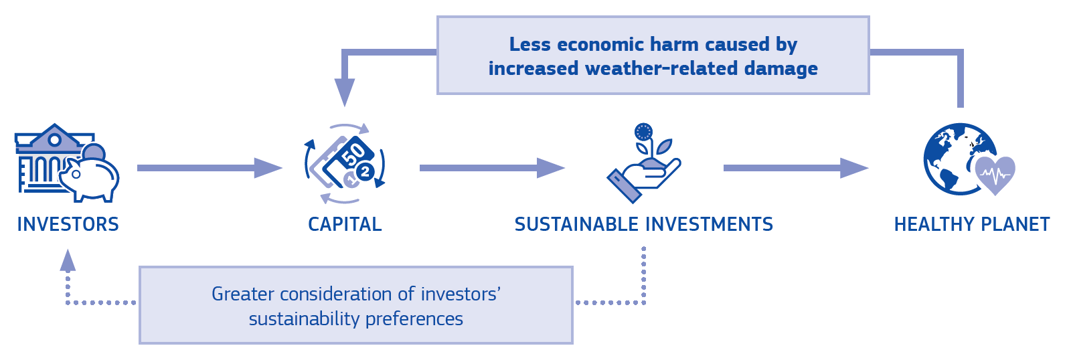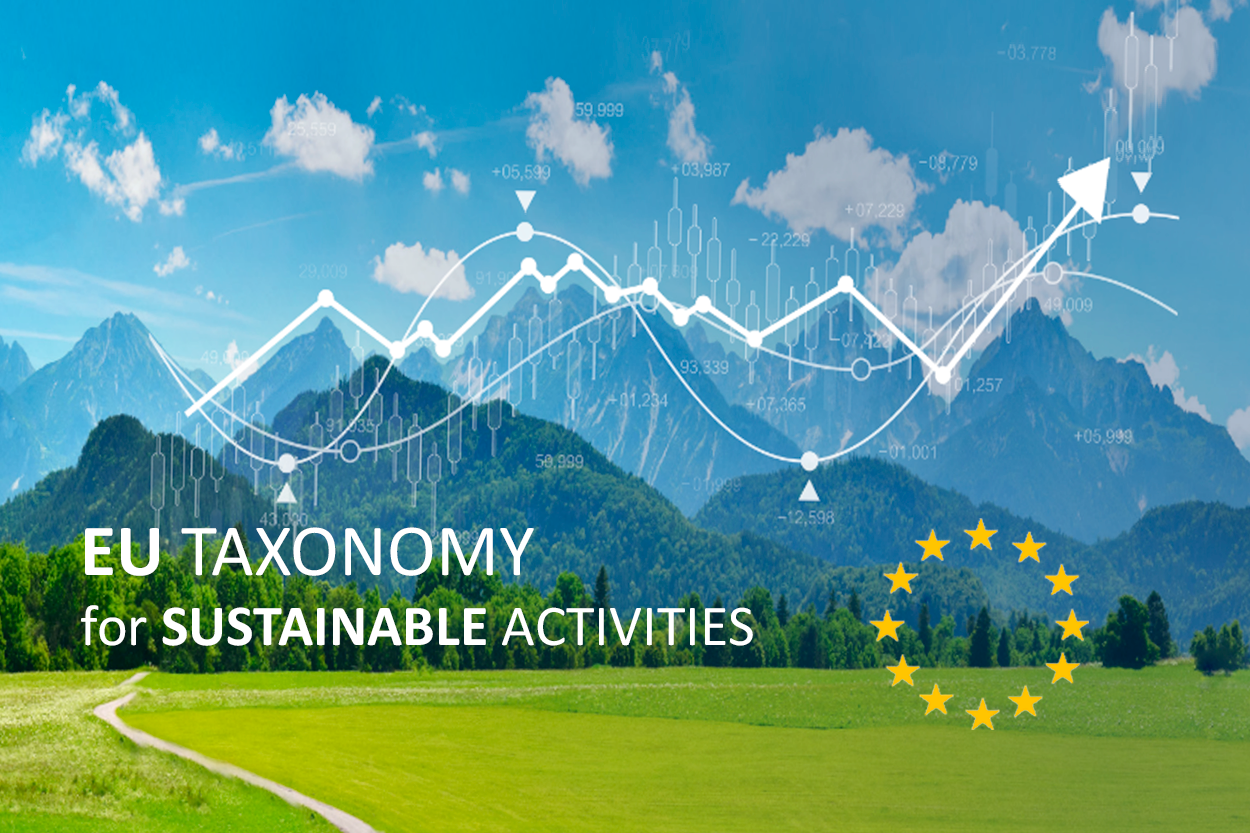The Taxonomy regulation for sustainable activities, adopted by the European Parliament, establishes harmonised criteria for determining whether an economic activity is environmentally sustainable. This regulation, together with the SFDR Regulation, is part of the European Commission's Sustainable Finance Action Plan, which regulates the application of ESG criteria in investment and finance.
What is the Taxonomy EU regulation?
The Taxonomy regulation (EU) 2020/852 is a European regulation that aims to create a shared classification of sustainable activities, i.e. to establish criteria to determine which activities are considered sustainable and which are not. The Taxonomy applies to any company in any sector and is complemented by the SFDR regulation (EU) 2019/2088 (Sustainable finance disclosure regulation), and the CSRD regulation (EU) 2022/2464 (Corporate Sustainability Reporting Directive).
The three regulations, together with the EU Action Plan on Sustainability Finance, are used to establish the ESG (environmental, social and governance) criteria, which are essential in the new paradigm of corporate finance and investment.
The creation of the Taxonomy stems from international agreements on climate change, such as the Paris Agreement and the European Green Deal, which set ambitious targets to limit global temperature rise and make Europe the first carbon-neutral continent by 2050.
In order to establish priorities on this path, so that investments can be channelled efficiently, the EU group of experts in sustainability and finance has been working on a classification of long-term financial objectives and strategies that allow achieving the goals of these agreements. This regulation, known as the EU Taxonomy for sustainable activities, was approved in a first package in April 2021.

How does it affect the rehabilitation and construction of new buildings?
The Taxonomy regulation lists the building industry as a major emitter of greenhouse gas emissions, with buildings being responsible for 36% of these emissions. To address this problem, the economic activities that can be acted upon are analysed. The Regulation also recognizes that construction is an inherent activity in many other sectors, as real estate is necessary in practically all of them.
The Regulation identifies the sector as one with alternatives, i.e. effective and enforceable emission mitigation measures are in place. Additionally, these alternatives should not pose risks or be harmful in other areas.
How to apply the Taxonomy regulation?
To understand how the Taxonomy regulation applies, we need to know what the environmental objectives or technical selection criteria are. It concerns the 6 environmental objectives determined by the regulation to ensure sustainability in various activities. In other words, it is the set of standards and metrics used to assess whether an economic activity can be considered environmentally sustainable under the EU Taxonomy. In the section “Environmental Objectives” we give you more information about these 6 objectives.
For an activity to be considered environmentally sustainable under the Taxonomy regulation, the following criteria or principles must be met :
- Substantial contribution (SC) to at least one of the six environmental objectives. For the moment, the regulation only allows choosing 2 of the 6 environmental objectives (climate change mitigation, climate change adaptation) as substantial contribution targets. Currently, the objective of substantial contribution towards a transition to a circular economy is in draft.
- Do No Significant Harm (DNSH) or do not cause significant harm to the environment to the other 5 environmental objectives not chosen as substantial contribution.
- Ensure minimum social guarantees. The OECD Guidelines for Multinational Enterprises and the United Nations Guiding Principles on Business and Human Rights must be complied with in the context of the activity.
Therefore, the requirements of the Taxonomy regulation will vary depending on the chosen substantial contribution objective, in addition to the type of activity in question. Below, we detail the different types of activities within the building industry. The differentiation by types of activity for the remaining sectors can be found in the annexes of the regulation.
Activities in the building industry
Annex 7 of the Taxonomy regulation identifies four types of activities related to the construction of buildings and property development. It should be noted that depending on the type of action, the parameters to be met by the Taxonomy regulation will vary.
|
Type of activity |
Description |
|
Construction of new buildings (NC) |
Promotion of construction projects for residential and non-residential buildings by gathering the necessary financial, technical, and physical means for the realization of such projects. |
|
Renovation of existing buildings (RH) |
Construction and civil engineering works or preparation of such works. |
|
Acquisition and ownership of buildings |
Acquisition of real estate and exercise of property rights over these assets. |
|
Installation, maintenance, and repair |
Of energy efficiency equipment. |
It should be noted that the activities 'Construction of new buildings' and 'Renovation of existing buildings' are the ones that most directly affect the building industry.
Environmental objectives
In the case of Building Construction and Real Estate Development Activities, the 6 environmental objectives of the Taxonomy regulation are as follows:
SC: Substantial Contribution/ DNSH: Do No Significant Harm
|
|
Construction of new buildings |
Renovation of existing buildings |
Acquisition and ownership of buildings |
|||
|
Environmental objective |
SC |
DNSH |
SC |
DNSH |
SC |
DNSH |
|
Mitigation of climate change |
✔ |
✔ |
✔ |
✔ |
✔ |
✔ |
|
Adaptation to climate change |
✔ |
✔ |
✔ |
✔ |
✔ |
✔ |
|
Sustainable use and protection of water and marine resources |
✔ |
|
✔ |
|
|
|
|
Transition to a circular economy |
✔ |
✔ |
✔ |
✔ |
|
|
|
Prevention and control of pollution |
✔ |
|
✔ |
|
|
|
|
Protection and recovery of biodiversity and ecosystems |
✔ |
|
|
|
|
|
Within our consulting services in sustainability and energy efficiency, we provide all the necessary calculations to evaluate and justify compliance with the requirements established in the Taxonomy regulation and ESG criteria. We offer services in:
- Strategies to reduce emissions in new projects
- Analysis of the building portfolio (emission assessment and mitigation measures)
- Review of energy certificates
- Specific actions that may fall within the requirements of Taxonomy
- Studies and proposals to achieve zero emissions targets
- Analysis of specific new construction projects
- Analysis of comprehensive rehabilitation projects
- Energy assessment of building acquisitions
If you are interested in any of the services we offer, do not hesitate to contact us.


